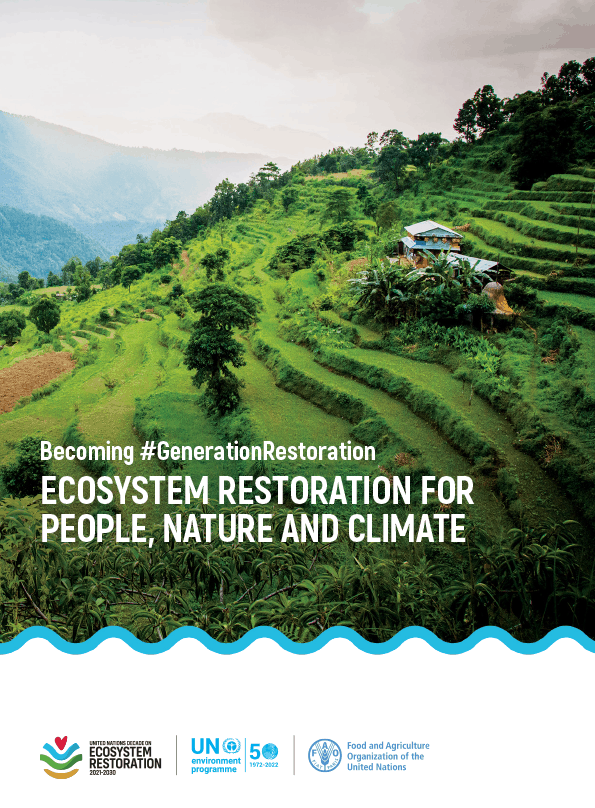Share:
Ecosystem Restoration for People, Nature and Climate: Becoming #GenerationRestoration

To launch the UN Decade on Ecosystem Restoration, UNEP has released a synthesis report as a call to action for anyone and everyone to join the #GenerationRestoration movement to prevent, halt and reverse the degradation of ecosystems worldwide.
Becoming #GenerationRestoration: Ecosystem Restoration for People, Nature and Climate synthesizes evidence of the state of degradation of the world’s ecosystems and details the economic, environmental and social rewards that restoration can bring. The report shows that, far from being a ‘nice to have’, ecosystem restoration is needed on a large scale in order to achieve the sustainable development agenda.
Over-exploitation of natural resources is embedded in economies and governance systems, and the resulting degradation is undermining hard-won development gains and threatening the well-being of future generations.
Countries need to deliver on their existing commitments to restore 1 billion hectares of degraded land and make similar commitments for marine and coastal areas. Ecosystem restoration is one of the most important ways of delivering nature-based solutions for food insecurity, climate change mitigation and adaptation, and biodiversity loss.
It won’t be quick or easy, and it will take deep changes to everything from the way we measure economic progress to how we grow food and what we eat. But the beauty of ecosystem restoration is that it can happen at any scale – and everyone has a role to play.

Synthesis report
Trees are more important today than This report represents a synthesis of recent research. All selected ecosystems – farmlands; forests; freshwater; grasslands, shrublands and savannahs; mountains; oceans and coasts; peatlands; and urban areas – are being degraded, often at an accelerating rate. We are fast approaching a tipping point for the climate (IPCC 2018) and are close to overshooting some of our other ‘planetary boundaries’. The demands humanity places on the biosphere – our ecological footprint – are simply too much (Dasgupta 2021).
KEY MESSAGE 1
Countries need to deliver on their existing commitments to restore 1 billion hectares of
degraded land and make similar commitments for marine and coastal areas.
The fulfilment of these commitments is not simply something that is ‘nice to have’. Restoration is essential for
keeping global temperature rise below 2°C, ensuring food security for a growing population and slowing the rate of
species extinctions. Humanity is not outside of nature; it is part of it. We need to recreate a balanced relationship with the ecosystems that sustain us.
KEY MESSAGE 2
Unfortunately, we are still going in the wrong direction.
The world’s ecosystems – from oceans to forests to farmlands – are being degraded, in many cases at an accelerating rate. People living in poverty, women, indigenous peoples and other marginalized groups bear the brunt of this damage, and the COVID-19 pandemic has only worsened existing inequalities. While the causes of degradation are various and complex, one thing is clear: the massive economic growth of recent decades has come at the cost of ecological health.
KEY MESSAGE 3
Ecosystem restoration is needed on a large scale in order to achieve the sustainable development agenda.
The conservation of healthy ecosystems – while vitally important – is now not enough. We are using the equivalent of 1.6 Earths to maintain our current way of life, and ecosystems cannot keep up with our demands. Simply put, we need more nature. The good news is that nature has an extraordinary capacity for renewal. While some ecosystems are approaching a tipping point from which they cannot recover, many others can flourish again if we stop the damage and restore their health, biodiversity and productivity.
KEY MESSAGE 4
Ecosystem restoration delivers multiple benefits.
It is one of the most important ways of delivering nature-based solutions for societal challenges.
- Half of the world’s GDP is dependent on nature, and every dollar invested in restoration creates up to USD 30 dollars in economic benefits.
- Restoring productive ecosystems is essential to supporting food security. Restoration through agroforestry alone has the potential to increase food security for 1.3 billion people. Restoring the populations of marine fish to deliver a maximum sustainable yield could increase fisheries production by 16.5 million tonnes, an annual value of USD 32 billion.
- Actions that prevent, halt and reverse degradation are needed if we are to keep global temperatures below 2°C. Such actions can deliver one-third of the mitigation that is needed by 2030. This could involve action to better manage some 2.5 billion hectares of forest, crop and grazing land (through restoration and avoiding degradation) and restoration of natural cover over 230 million hectares.
- Large-scale investments in dryland agriculture, mangrove protection and water management will make a vital contribution to building resilience to climate change, generating benefits around four times the original investment.
- With careful planning, restoring 15 per cent of converted lands while stopping further conversion of natural ecosystems could avoid 60 per cent of expected species extinctions.
KEY MESSAGE 5
Achieving successful ecosystem restoration at scale will require deep changes, including:
- Adopting inclusive wealth as a more accurate measure of economic progress. This will rest on the widespread introduction of natural capital accounting.
- Creating an enabling environment for private sector investment, including through public-private partnerships.
- Increasing the amount of finance for restoration, including through the elimination of perverse subsidies that incentivize further degradation and fuel climate change, and through initiatives to raise awareness of the risks posed by ecosystem degradation.
- Taking action on food waste, making more efficient use of agricultural land, and encouraging a shift to a more plant-based diet.
- Expanding awareness of the importance of healthy ecosystems throughout our educational systems.
KEY MESSAGE 6
Everyone has a role to play in ecosystem restoration.
The restoration of ecosystems at scale is no small task, and it will take a concerted effort to truly restore the planet. The UN Decade on Ecosystem Restoration aims to catalyse a global movement among local communities and activists, women, youth, indigenous groups, private companies, financial investors, researchers and governments at all levels.
The beauty of restoration is that it conveys a message of action and hope, and it can happen at any scale – whether a backyard plot, a city park, a river valley, a national forest or a globally threatened ecosystem. This means that everyone can get involved.
KEY MESSAGE 7
Achieving the aims of the UN Decade will require action by many. We call on:
- Governments to ensure that their COVID-19 recovery plans incorporate significant allocations for ecosystem restoration as a central component to delivering a green, sustainable and fair recovery. Currently, only about 18 per cent of recovery stimulus plans can be characterized as ‘green’.
- Parties to deliver on existing commitments under the Rio Conventions and the Bonn Challenge to restore 1 billion hectares of land.
- Donors and institutions working on coastal and marine restoration to develop and deliver on ambitious restoration goals equivalent at least to the Bonn Challenge.
- Public and private financial institutions and regulatory bodies to develop and strengthen instruments and mechanisms to ensure that finance flows support – and do not compromise – restoration efforts.
- Indigenous peoples and local communities across the world to build on their knowledge, experience and capacity for action to help achieve restoration goals.
- Youth organizations to play an active leadership role in ecosystem restoration locally, nationally and globally and to actively participate in the governance and implementation of the UN Decade.
Source: UNEP
Featured photo by Pablo Nida






